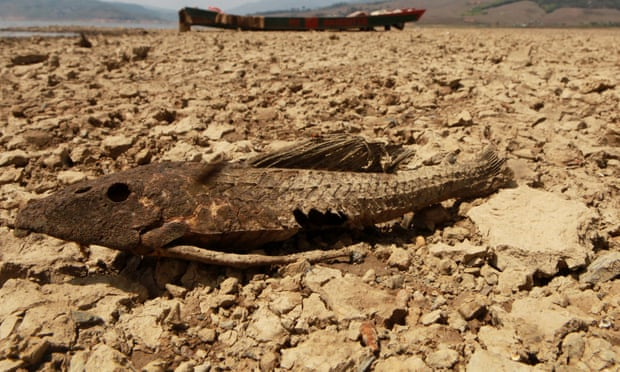The last El Niño event ended in 2016 and helped make that year the hottest ever recorded by adding to the heating caused by humanity’s carbon emissions. The 2019 event is not currently forecast to be as strong as in 2016.
El Niño events occur naturally every few years and stem from abnormally high ocean temperatures in the western Pacific. They have a major influence on weather around the globe, bringing droughts to normally damp places, such as parts of Australia, and floods to normally drier regions, such as in South America. The high temperatures also cause major bleaching on coral reefs.
“The forecast El Niño is not expected to be as powerful as the event in 2015-2016,” said Maxx Dilley, the director of WMO’s climate prediction and adaptation branch. “Even so, it can still significantly affect rainfall and temperature patterns in many regions, with important consequences to agriculture and food security, and for management of water resources and public health. It may also combine with long-term climate change to boost 2019 global temperatures.”
Forecasters in the US have already warned of an imminent El Niño. Australia’s Bureau of Meteorology said in October that a dry, hot summer was very likely, with increased risk of heatwaves and bushfires and no relief for already drought-stricken farmers. There is evidence that climate change is making the effects of El Niño more severe.
The heat boost from El Niño helped 2016 to be the hottest year ever recorded. The following year, 2017, was ranked equal second, but was the hottest for a year without an El Niño. Scientists expect 2018, which saw climate-related disasters around the globe, to be the fourth hottest on record.
Billions of tonnes of carbon emissions are continuing and greenhouse gases are at record concentrations, meaning their heating effect is stronger than ever. But whether a new El Niño will help make 2019 a new record remains to be seen.
“The developing El Niño conditions are likely to contribute to warmer global average temperature in 2019 – it is a little too early to say whether or not it will be a record year,” said Tim Stockdale, at the European Centre for Medium-Range Weather Forecasts.
In any case, human-caused global warming has resulted in 17 of the 18 hottest years recorded since 1850 occurring between 2000 and 2017. Scientific analyses have shown that many extreme weather events have been made more severe or more likely by climate change.
The WMO analysis estimated the chance of a fully-fledged El Niño event between December 2018 and February 2019 at 75-80%, with a 60% chance of it continuing to April 2019. A strong El Niño sees western Pacific sea surface temperatures reaching at least 1.5C more than average. Current model predictions for the imminent El Niño range from 0.8C to 1.2C above average.
More about: #Global-Warming
















































